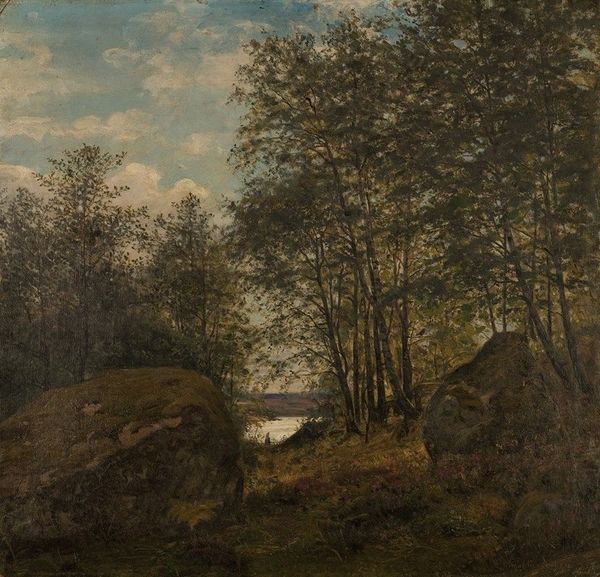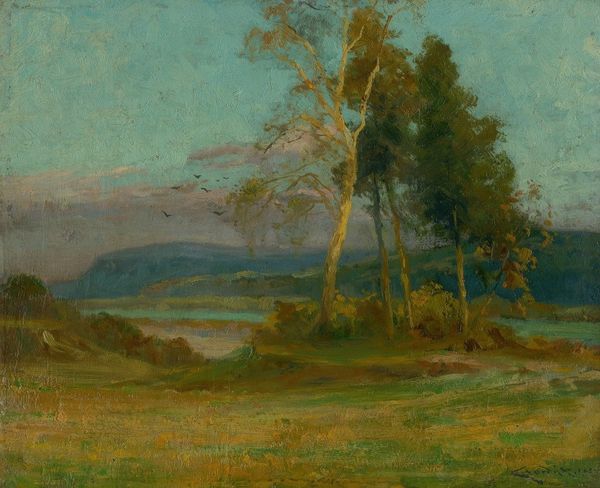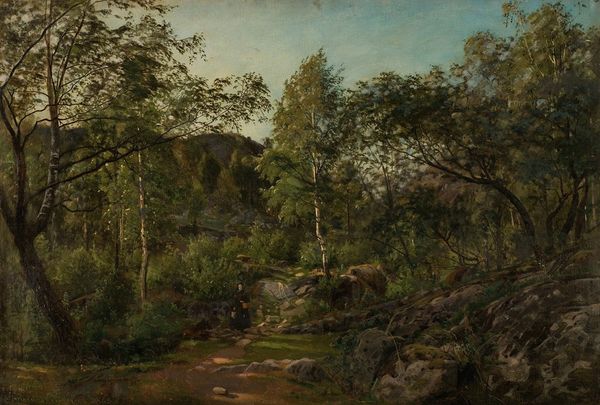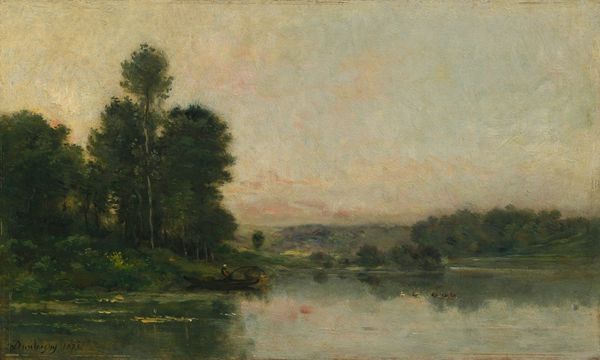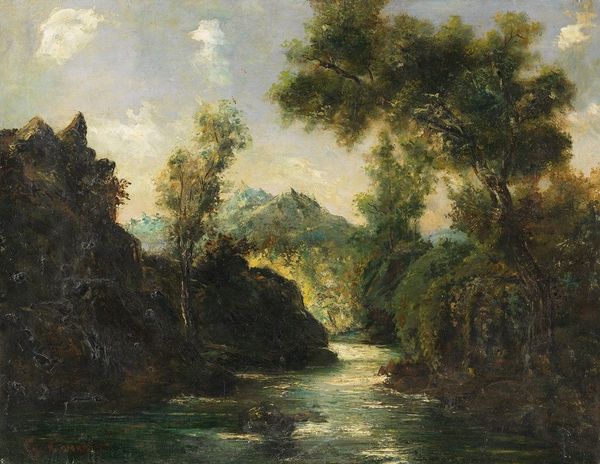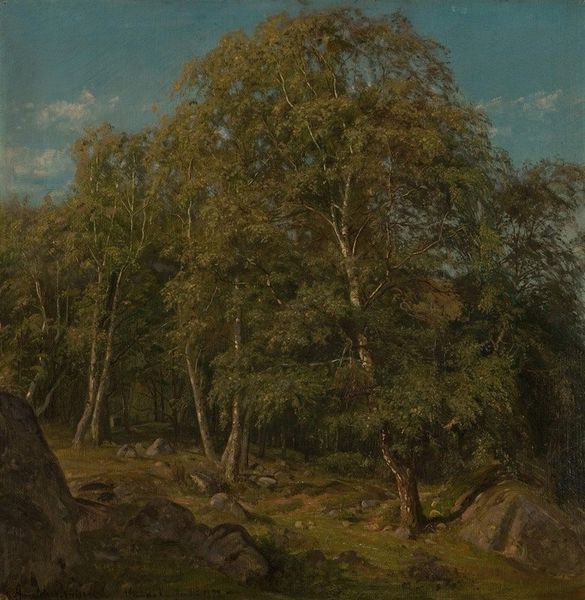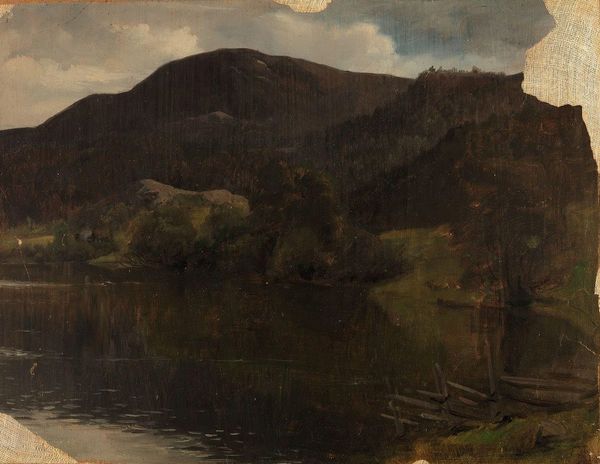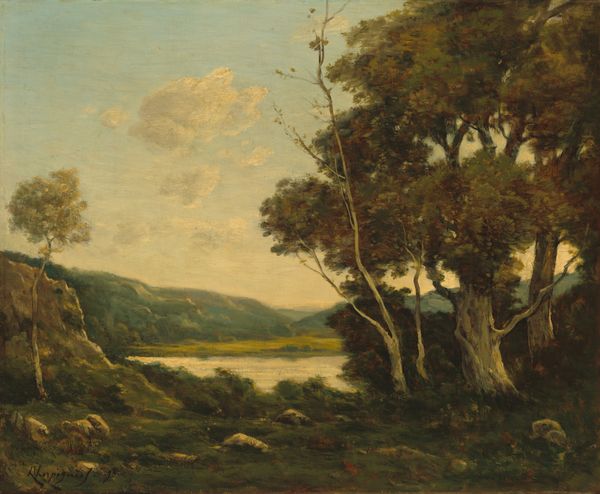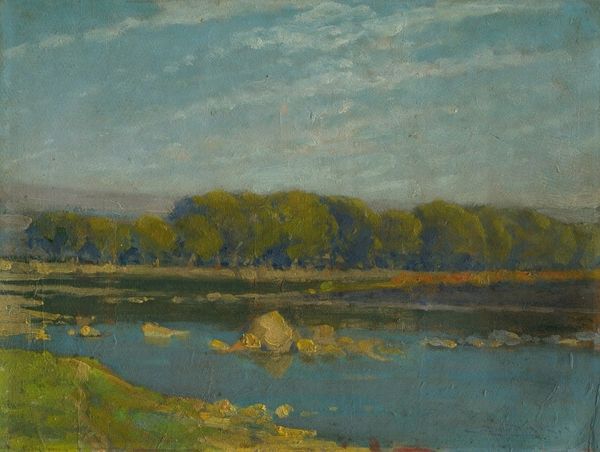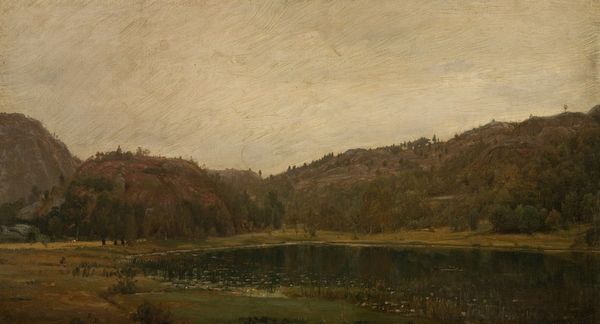
Copyright: Public Domain: Artvee
Editor: So here we have Gustave Courbet's "Landscape From Jura", painted in 1868 using oil paint. It feels incredibly immersive; the density of the forest and the light breaking through are really striking. What compositional elements stand out to you? Curator: Notice first the interplay of light and shadow that defines the depth. Courbet has manipulated the surface materiality of the oil paint, achieving this dynamism with tonal variation alone. Consider how the impasto creates textural contrast. Can you see how this activates the entire composition? Editor: Yes, the foreground is much more textured, almost rugged, and that contrasts with the smoother treatment of the sky. It nearly feels unbalanced in texture, but it isn’t unbalanced visually. Curator: Precisely. This tension derives from what we could call a certain lack of closure. Note the density of the facture which generates, precisely, a tension. Are we looking at pure representation, or an expressive act? Is there something else there, below the surface? Editor: An expressive act, definitely. Is it a reaching for realism but going beyond that by exploring how paint itself can create the landscape rather than just represent it? Curator: Consider how the materiality itself contributes meaning. He wasn’t just painting a landscape; he was making the *experience* of that landscape tangible through paint. And perhaps something more subjective that we must deduce on our own. Editor: I see it! The surface IS the subject. I walked in thinking about the Jura mountains and I’m walking away thinking about oil paint. Curator: Indeed. That shift in perspective is key. And hopefully it enables you to perceive all visual art anew.
Comments
No comments
Be the first to comment and join the conversation on the ultimate creative platform.

